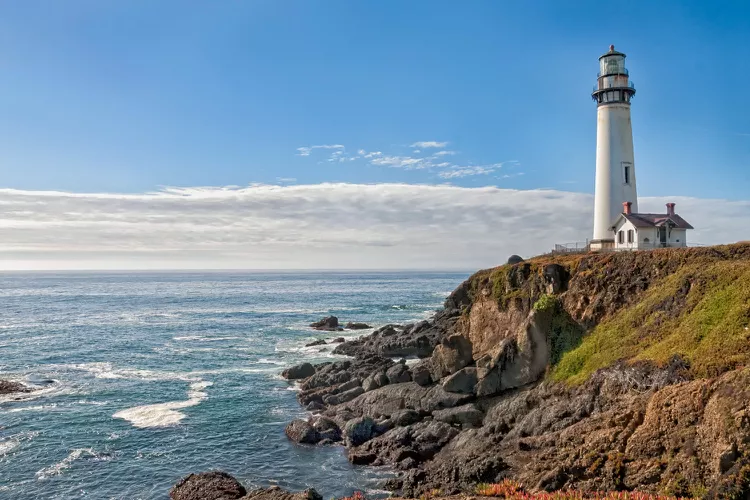Summary
Pigeon Point Lighthouse: A Coastal Beacon in California
Pigeon Point Lighthouse is California’s most photographed lighthouse, notable for being one of the tallest lighthouses on the Pacific Coast, standing at an impressive 115 feet. Located fifty miles south of San Francisco, just a few miles north of Santa Cruz, this lighthouse has served as a guiding light for mariners since its establishment in 1872.
The site houses a first-order Fresnel lens, currently displayed in the fog signal building while restoration work is underway following structural issues. Although the tower remains an active navigation aid through an automated beacon, visitors can still appreciate its historical significance.
What You Can Do at Pigeon Point Lighthouse
While access to the interior of the lighthouse is restricted until repairs are finalized, you can take a virtual tour at the California State Parks website. Restoration efforts began in 2011 after a significant exterior failure, prohibiting public entry.
Visitors can view the magnificent 16-foot tall, 6-foot diameter Fresnel lens on display, weighing 2,000 pounds and made up of 1,008 polished lenses and prisms, which together can emit over 500,000 candlepower of light.
The outdoor areas are accessible during daylight hours, where you can enjoy guided history walks conducted by docents a few times a week. Check the walking schedule for specifics.
Just a short walk from the main parking area, a small public beach offers exploration opportunities with tide pools at low tide. For tide schedules, visit the NOAA website.
The Pigeon Point area is also renowned for bird watching, making it a premier spot for observing diverse seabirds. Additionally, visitors frequently spot seals, sea lions, and occasionally whales passing by the coastal cliffs.
The lighthouse grounds provide a spectacular vantage point for stargazing, although public access is limited at night to hostel guests.
Traditionally, commemorative lighting events took place around November 15, attracting photographers to capture its beauty. Due to ongoing repairs, confirm event availability before planning your visit.
Pigeon Point Lighthouse’s Fascinating History
The lighthouse’s name originates from the clipper ship Carrier Pigeon, which tragically sank nearby in 1853. Following additional shipwrecks in the area, Congress approved its construction at a cost of $90,000, translating to over $2 million today. In comparison, the projected restoration costs are estimated to exceed $11 million.
Initially, the facility doubled as a tourist attraction, with early light keepers serving as guides. An 1883 excerpt from the San Mateo County Gazette highlights the enthusiastic narrations of these guides: “Our escort was of a very talkative disposition and took great pride in dilating upon the wonders of the establishment.”
The Fresnel lens, a remarkable first-order lens, was previously utilized in the Cape Hatteras Lighthouse until the end of the Civil War. Pigeon Point’s original lighting pattern comprised a flash every ten seconds, distinguishing it amongst its contemporaries.
Visiting Pigeon Point Lighthouse
While overnight stays in the tower are not permitted, the former keepers’ quarters now serve as a hostel managed by Hostelling International, offering dormitory-style and private accommodations along with a scenic cliffside hot tub, which is especially popular at sunset.
Pigeon Point Lighthouse is located at 210 Pigeon Point Road, Highway 1, Pescadero, CA. For further details, including current hours and event schedules, consult the Pigeon Point Lighthouse website.
Please note that only service animals are allowed on the grounds. Amenities include restrooms located near the parking area and a few picnic tables available for use, along with a park store situated in the historic carpenter’s workshop.





